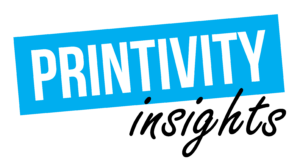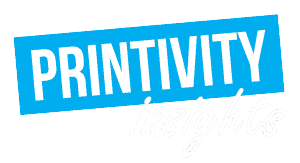Last updated on May 16th, 2023 at 02:52 pm
When ordering a printed book project, one of the most important decisions is what kind of binding to select. The appropriate choice depends on what type of book you are printing and the impact you want to make on readers. If you want to order a softcover book, then consider PUR perfect binding.

What is PUR binding?
This common, and very popular, binding method for softcover books that uses traditional glue binding methods, but with a premium glue, PUR. With perfect binding, the cover and the pages are glued together at the spine of the book. The pages and the cover are then trimmed to the exact same size in order to create perfect edges.
PUR stands for “polyurethane reactive adhesive.” This remarkably strong and pliable adhesive is what makes PUR binding the best choice for softcover books. PUR is the most durable bookbinding glue on the market, outperforming Ethylene Vinyl Acetate (EVA) and other types of adhesives used in traditional perfect binding.
Thanks to the strength of its adhesive, PUR binding provides many important benefits:
- PUR is more flexible than other adhesives. This allows the book to be opened wide or pressed down without the glue cracking at the spine – a very useful feature with softcover books.
- PUR has higher resistance to page pull-out – up to 50% more than EVA adhesive. Once a book is bound with PUR adhesive, the pages have a stronger hold at the spine.
- PUR can adhere to many different substrates (the base material that the project is printed on), ranging from recycled paper, ink and varnish to UV-coated or aqueous-coated stock and mylar.
- PUR doesn’t require as much adhesive as EVA and other types of glue to firmly bind the cover and pages. Using less glue causes less distortion of the spine’s shape, thereby producing a nice square appearance. Another advantage of using less glue means it is less likely for the glue to appear on the inside cover.
- Unlike other adhesives, PUR’s structural integrity doesn’t deteriorate in extreme hot or cold temperatures. It holds up well in environments as low as -40º to as high as 200º Fahrenheit.
What is PUR binding used for?
PUR binding is ideal for any type of perfect binding. It provides a clean and elegant glue bind that looks good while providing a quality reading experience. Its strength and durability make it the best choice for regular softcover perfect binding. PUR perfect binding is ideal for books that need to withstand a lot of handling, such as yearbooks, catalogs, magazines, manuals, children’s books and more.
PUR perfect binding is also the method of choice when you have a large page count book. The strong glue makes it ideal for “how to” books, catalogs, yearbooks, coffee table books and other showcase pieces that need the highest quality.
What makes PUR binding better than EVA?
For years, EVA glue was the go-to adhesive in the print binding industry, and is still widely used today. It costs less than PUR, has a short set time, and can be used in many applications. Plus, the properties of the glue allow it to be re-melted, which minimizes waste during the production process. However, when it comes to the performance of the binding, PUR comes out far ahead.
Since its introduction in 1989, PUR adhesive has become the leading choice within the binding industry. It requires the same application process as EVA – creating fiber to prepare the spine for application of the glue. Once applied, PUR undergoes a chemical reaction that enables it to bond to the fiber at the molecular level, a key factor in the strength and flexibility of the glue.
One of the biggest benefits of PUR glue is that it requires less glue than EVA, yet still produces a stronger, more flexible bond. Using less adhesive makes it possible to achieve a square spine even on books with very low page counts. It produces a more visually appealing final product (partly because PUR is clear, whereas EVA is amber or white).
Another important difference is that EVA is designed to be reactivated when heated. As a result, a book bound with EVA can re-melt in an environment of extreme heat. It can also become brittle and crack in too cold of temperatures. In contrast, PUR can’t be reactivated once it sets. This gives it the ability to hold up in extreme temperatures, both hot and cold.
From a flexibility standpoint, EVA can’t be used with as many different paper types as PUR. It works well with standard and uncoated paper stocks. However, PUR is the better choice for heavily coated stocks, wrong-direction grains, heavy ink coverage, and other materials that are hard to bind.
The #1 choice for perfect binding projects
Ultimately, the best answer to the question “What is PUR binding?” is this: PUR is the most versatile and durable print binding adhesive in use today. It works well for all perfect bound book projects. It can be used with any type of ink or paper stock, allowing the widest variety of paper and finishing options. And it provides a lasting bind for books ranging from low to high page counts.
If quality and durability are at the top of your binding requirements, and you want a soft cover book that looks great and stands the test of time in any environment, be sure to ask for PUR perfect binding from Printivity.
Still not convinced that PUR is the right choice?
The Printivity customer service department will help you decide if PUR perfect bounds books is the right choice for your project. Contact us at 1-877-649-5463 or service@printivity.com.










